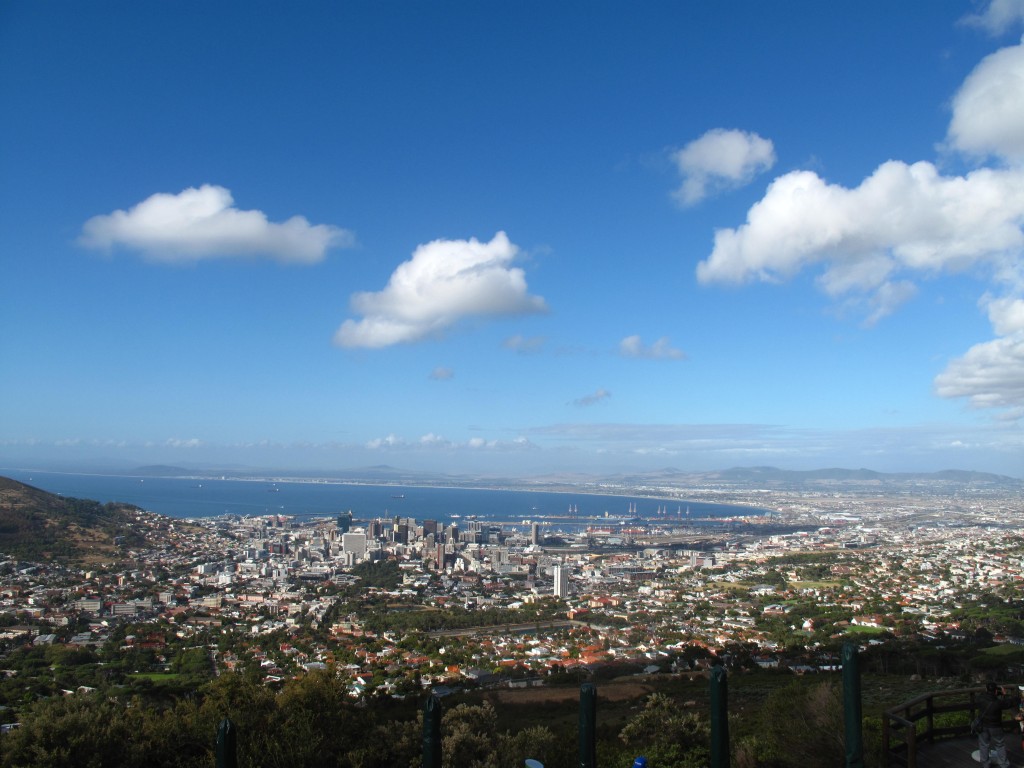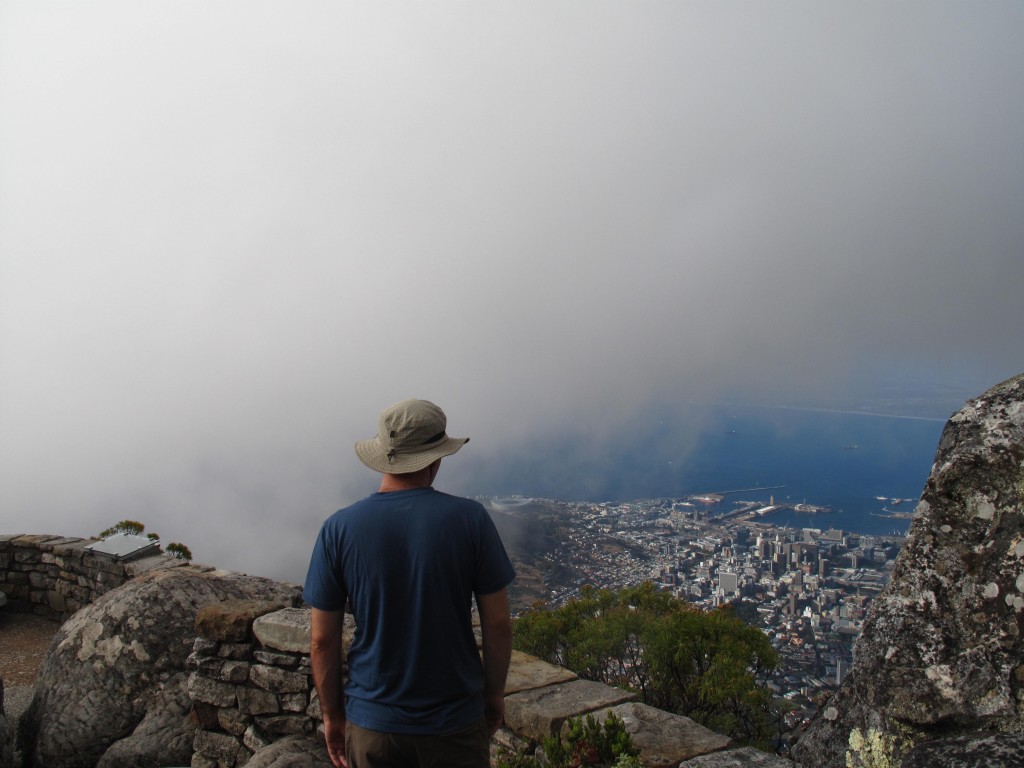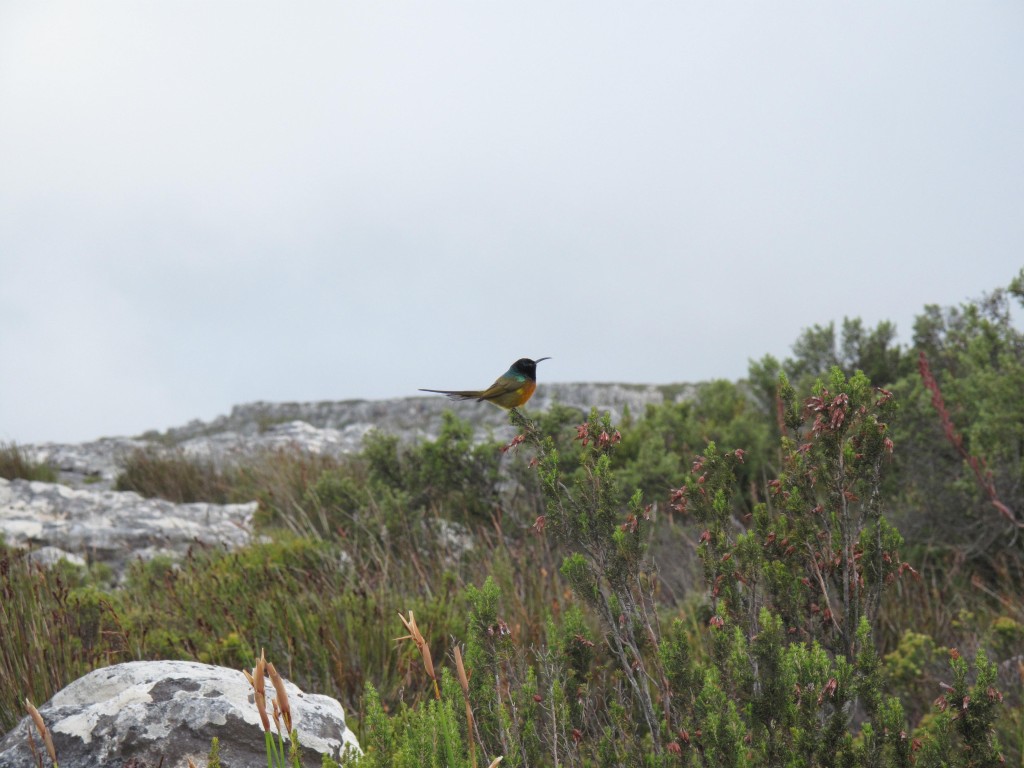Our first destination in South Africa was Cape Town, and while waiting for our connecting flight in Johannesburg, Jason made an outlandish prediction: I bet we can find an IPA somewhere in this airport. After nearly two months of no beer (Morocco) and boring lager (all we could find everywhere else in Africa), we were jonesing for some hoppy goodness.
Just a few hundred feet down the terminal, we were astonished to find this place.

Some appetizers and a beer (or two) later, we were on our way to Cape Town (called Camissa in Khoi and Kapstaad in Afrikaans), where we stayed the first few nights with our good friend Rowena from the Berkeley co-ops and her boyfriend (almost-husband!) Cory. While the airport IPA was good, this Devil’s Peak IPA Cory offered us from their fridge was the best beer we had since Norway (at a fraction of the price).

We loved catching up with the ever-adventurous Rowena and hearing about the amazing work she and Cory are doing at Dimagi, a software company that works to improve the adoption of mobile technology in developing countries, in effort to improve health care and agricultural practices. We also went on a “nomad date” that Rowena arranged at a delicious Indian place with her friends Hélène and Yaw, who have been traveling the world and working for some time now.

Dinner was fun and delicious – we got so much good advice from the seasoned nomads (like checking out NomadList) and were inspired by their tales of motorcycle adventure! And while swapping stories with them, we learned that Hélène was childhood friends with Jason’s new colleague at AI2 — small world, indeed!
After our rewarding but often-challenging experiences elsewhere in Africa, Cape Town was like a candy store. We found delicious restaurants serving every kind of food on every corner, Uber worked like a charm, and everything was dirt-cheap (largely because the of a recent favorable (to us) turn in the exchange rate). It was nice to have some easy and relaxing time, especially since we expected our next country, India, to be full of its own challenges.
Having got our bearings at Rowena’s place, we moved to an Airbnb in a sort of trendy neighborhood (Zonnebloem) a short walk down the hill.
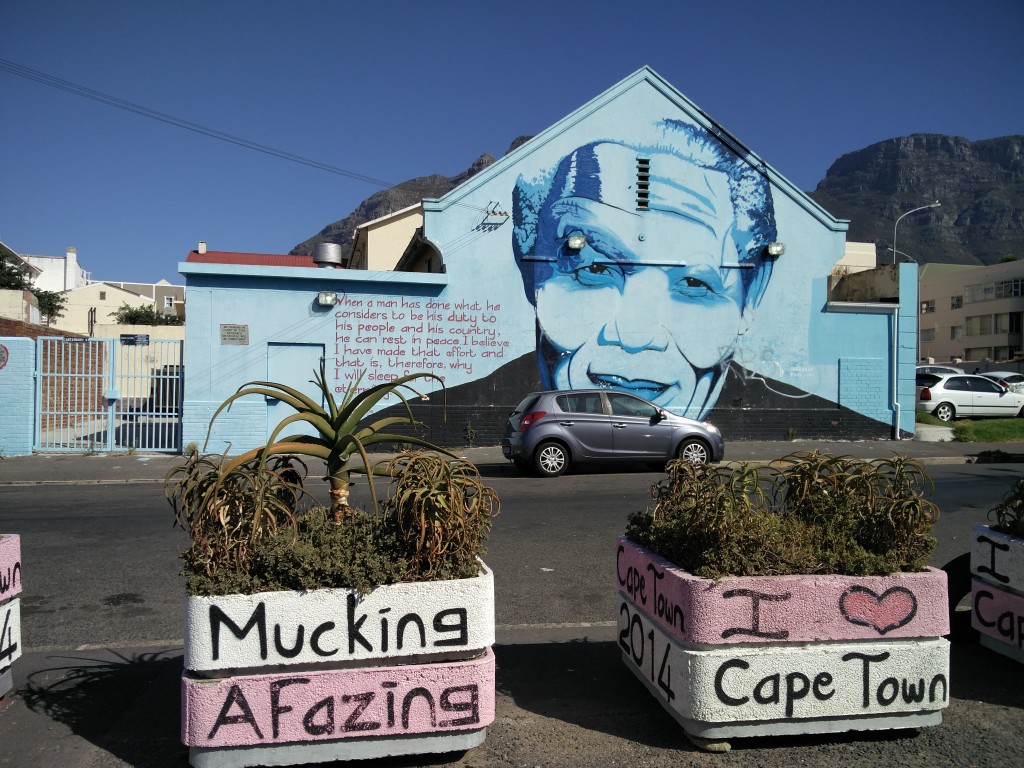
This neighborhood turned out to be part of the former District Six, a community that was leveled decades earlier during the lead-up to apartheid, under the ‘Group Areas Act’. In 1966, District Six was declared a ‘white group area’ (despite the fact that it had largely been inhabited by African and coloured residents since 1900), and 60,000 people were relocated to the Cape Flats area (often described as ‘apartheid’s dumping grounds’) over the next fifteen years.
We visited the District Six Museum and learned about the culture and history of area before the removals. And we learned about the efforts to relocate displaced families to their former community. On February 11 2004, exactly 38 years after District Six was declared a white group area, former president Nelson Mandela handed the keys to the first returning residents. But the return since then has been slow: since the removal, only 135 homes have been built and only 42 of the original 150 hectares is available for relocation.
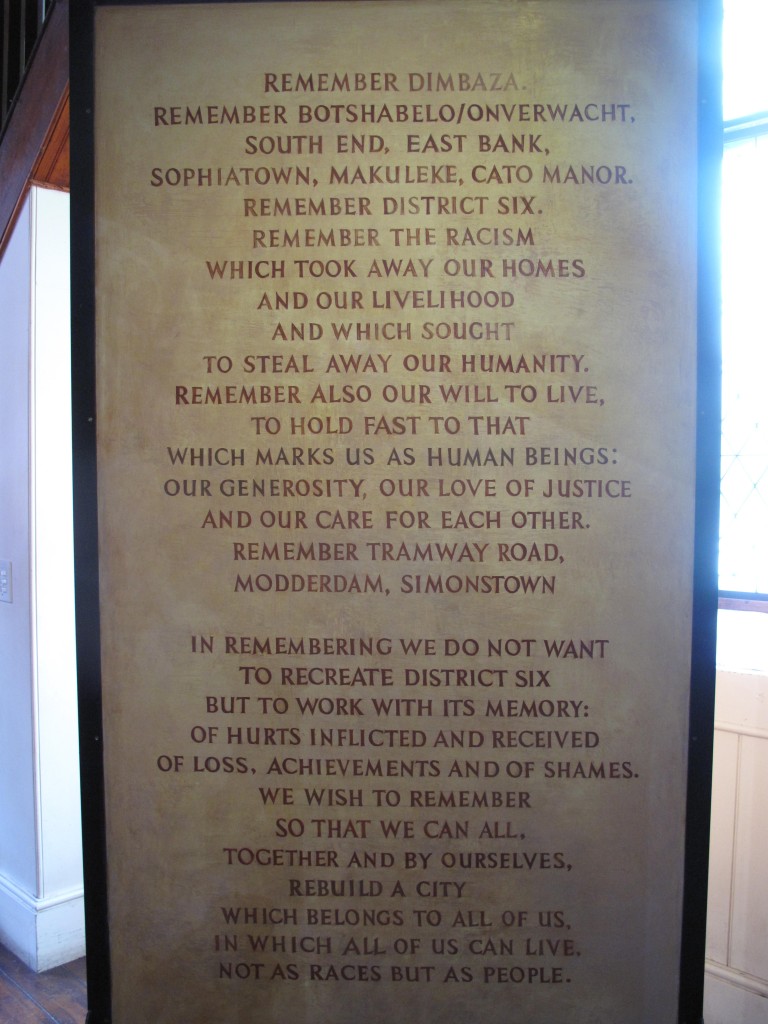
Despite Cape Town’s progressive and cosmopolitan feel, there was still a strong undercurrent of lingering inequality and racial divide. Institutionalized segregation under apartheid only ended in 1990, and we often felt like we had been transported half a century back in time. Throughout the city, most homes and buildings were surrounded with high-voltage fencing and several layers of locking gates, and our friends advised us not to walk at night — even a few blocks, in the nicest-seeming neighborhoods.
On the first day at our new place, we took a break from work to walk to the grocery store. As we followed our map into the downtown area, to our surprise the sidewalks were lined with razor wire.

It seemed like there was an election going on, since many people were wearing t-shirts with party names and faces of what appeared to be candidates on the front. The vibe was calm, so we continued onwards until we saw a wall of people in the distance a block or so away.
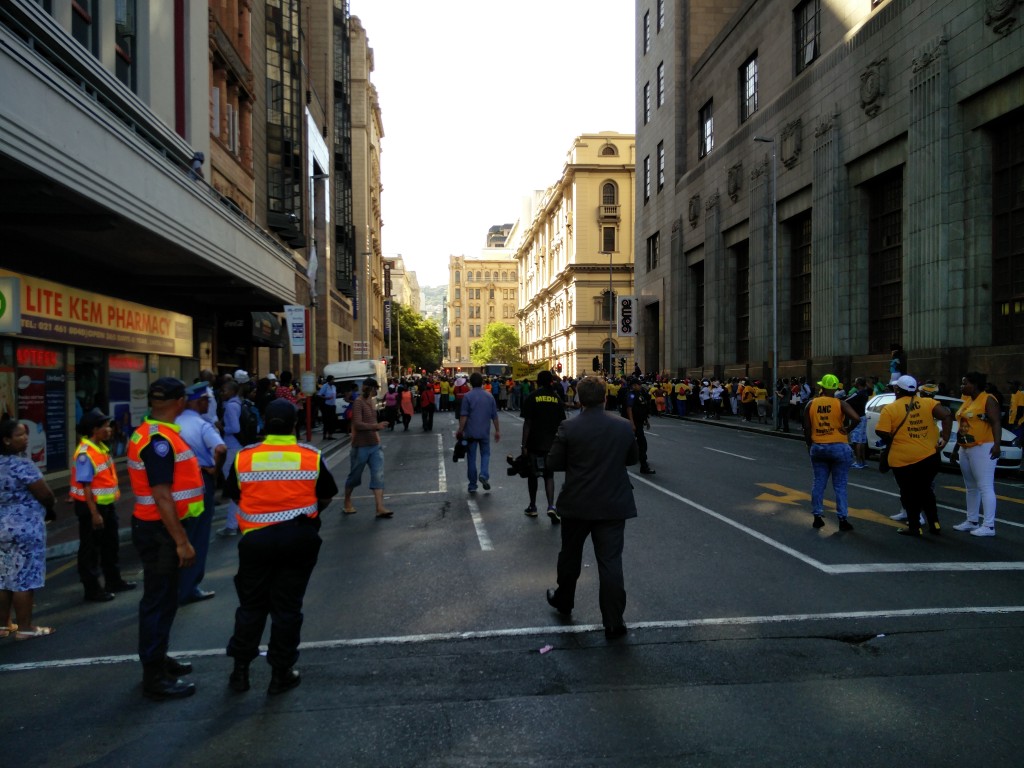
All of a sudden, we heard a loud noise and the wall of people was heading towards us, and everyone in the street scattered. We followed down a side-street, and took a detour to the market. Things still seemed calm on the surface, but we heard intermittent loud noises in the distance, and some people ran by. One guy was all sweaty and carrying a two-by-four. Some of the shops we passed seemed to be temporarily closed, with the patrons locked inside. We hurried as fast as we could to the safety of the market, and caught an Uber home.
When we got there, we looked online and discovered that this was not an election; rather, a protest anticipating the state of the nation address, where the conflict between the political groups ANC and EFF had gotten out of hand. We even found a photo of the sweaty two-by-four guy, who had apparently been using it shortly before or after we saw him.
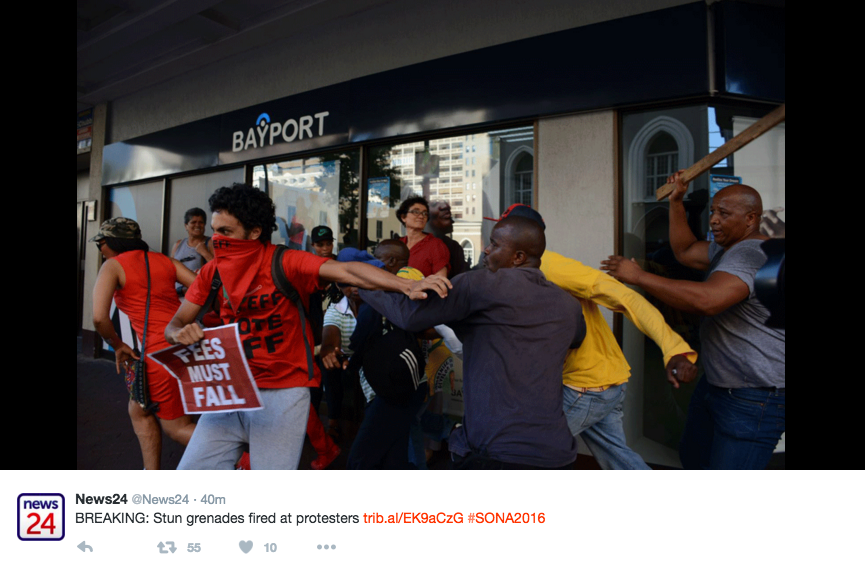
The next day everything had calmed down, but we exercised more caution from here on out. Besides work, food, and drink, our remaining time in Cape Town was spent exploring the ample natural beauty that surrounds it. Towering over the city is a huge ridge called Table Mountain, one of the so-called “New Seven Wonders of the World” — and right next to it is a tall peak called Lion’s Head. We climbed this peak at sunset, following a trail that spirals around until reaching a system of ladders, handholds and ropes to the summit. The views back onto the city, Table Mountain, and the ranges behind it were spectacular.
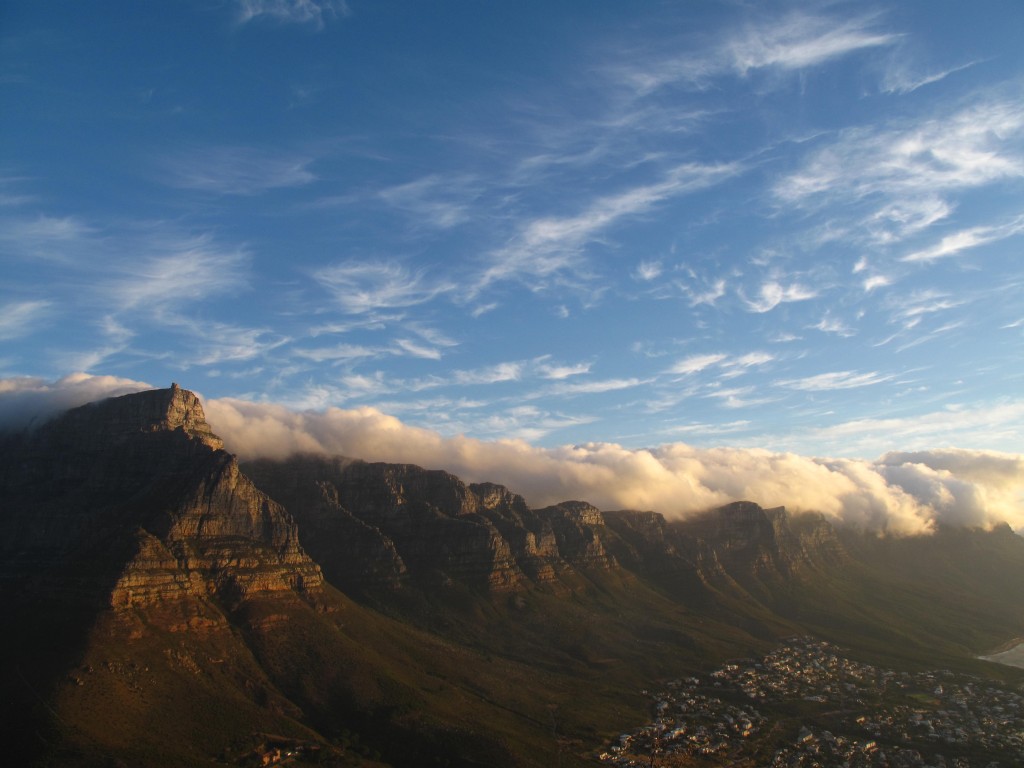
Table Mountain is behind us, and the nearly ever-present fog on top is known as its tablecloth. The little bump at the peak is the cable-car station, the lazy way to explore the national park atop the ridge.
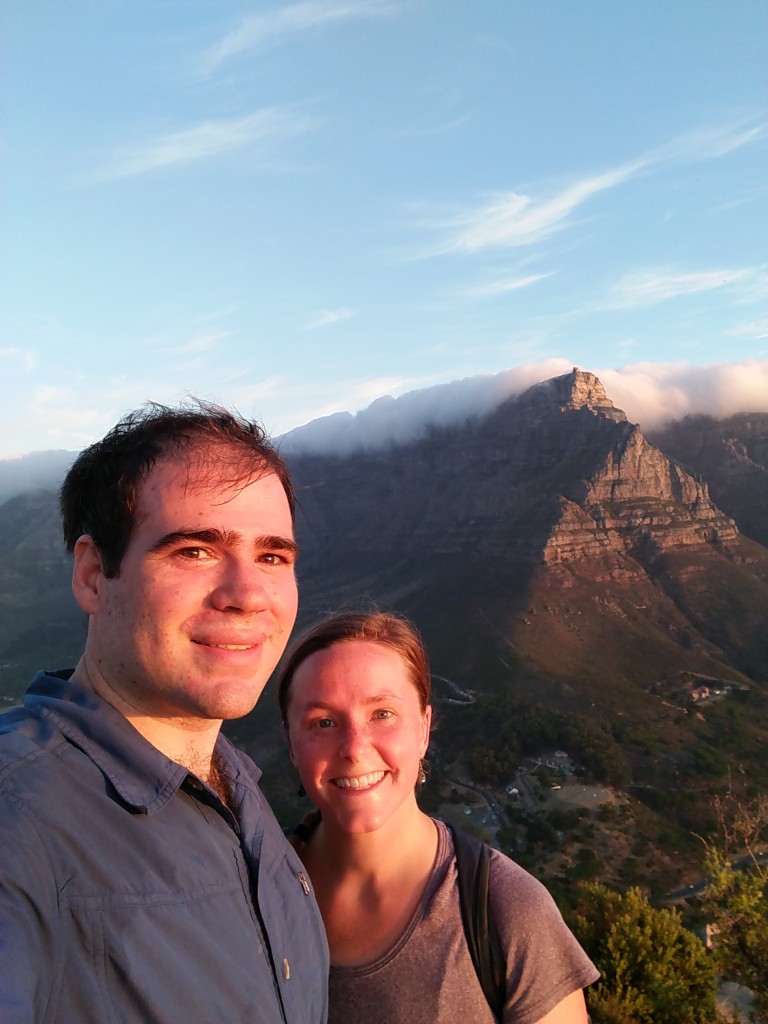
The next day, we got on the rotating cable car, which had alternately beautiful views of the mountain
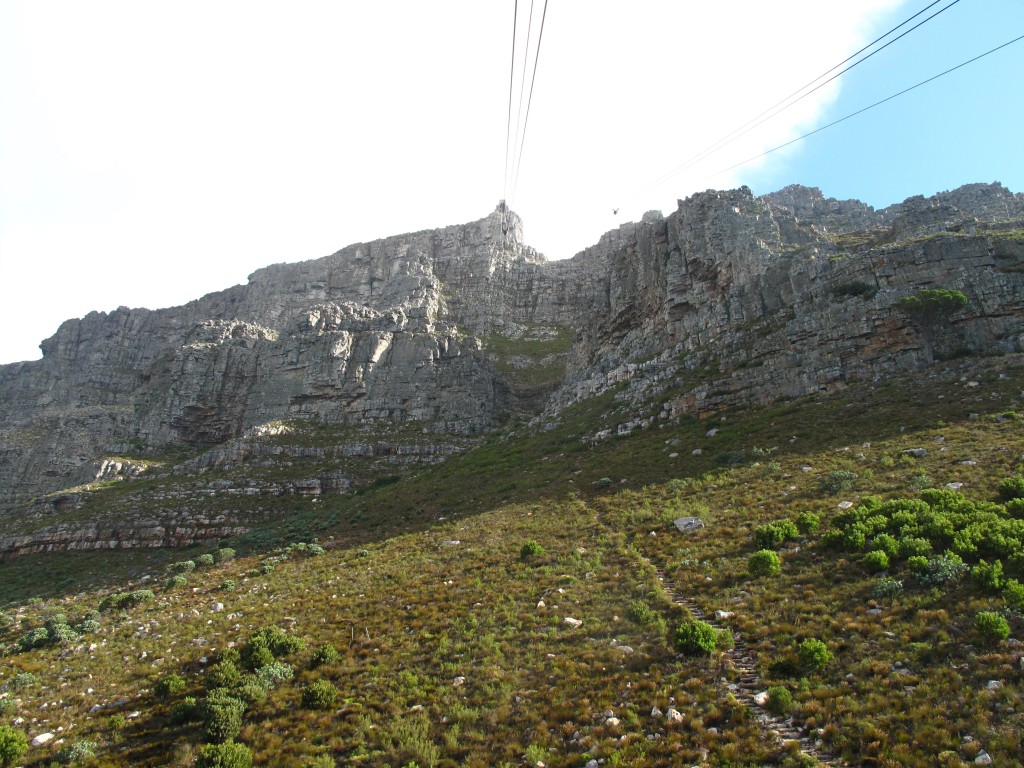
as we climbed to the top, which was just at a cloud-base of its own making.

Despite intensive conservation efforts, the Table Mountain range has the highest concentration of threatened species of any continental area of equivalent size in the world. Besides the views, we saw a number of dassies (or ‘rock rabbits’),

and unique vegetation, which primarily consists of several types of the Cape fynbos. The distinctive vegetation of Table Mountain is part of the Cape Floral kingdom – one of only six floral kingdoms in the world.

We didn’t stay too long, however, since it was unexpectedly freezing at the top, a big surprise given how hot it had been in the city below. The next morning, we picked up our rental car for the next adventure, a leisurely exploration of the beautiful Garden Route along the southern coast of the country.
